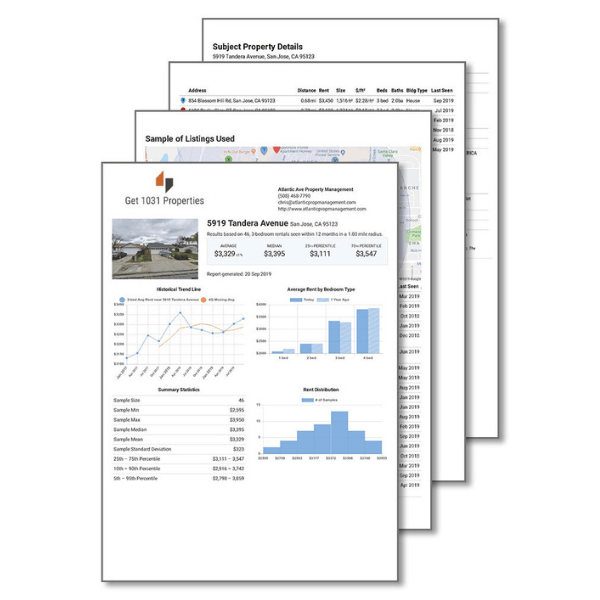How a DST May Be a Solution for Aging Rental Property Owners
For investors nearing retirement age and looking to generate more income.
With the exception of 4 recessionary periods, the United States economy has experienced significant growth since July of 1980. If you’ve been a real estate investor for any length of time during this expansion, odds are that you’ve experienced material price appreciation in your holdings. If you started investing towards the beginning of the expansion, you may also be at an age where: (1) you’re tired of actively managing your properties; and (2) you’d like to enjoy the fruits of your success.
For individuals who find themselves in this situation, there are two traditional options to consider:
1. Sell the property and pay the taxes:
This is the easiest and most straightforward solution. Selling the property allows the owner to realize their gains, but it also comes with an unpleasant downside, a big tax bill. In 2019, the top federal capital gains tax rate is 20% depending on income and filing status (it may be higher in certain states such as NY and CA)[1]. Because this is significant, many investors are driven to consider ways to defer taxes on their gain, which creates a second option;
2. Sell the property and reinvest the proceeds via a 1031 exchange:
With this option, the property is sold in the same way as option #1, but the proceeds are reinvested into another property using something called a 1031 exchange. Under section 1031 of the Internal Revenue Code, gains on a property may be deferred, allowing the owner to redeploy the capital that would have been paid in taxes, as long as they are reinvested into a property of “like kind” within 180 days of the sale date[2].
A 1031 exchange is a great solution for the tax issue, but it doesn’t take care of the active management problem, which can be time consuming and stressful. For investors nearing retirement age and looking to generate more income, this is likely something that they just don’t want to deal with.
Luckily, there is an alternative option that solves both the tax issue and the active management issue while potentially generating more income and providing individual investors with access to institutional quality assets that they wouldn’t otherwise be able to invest in. It is called a Delaware Statutory Trust (DST) and the purpose of this article is to provide an overview of the DST option and to explain how it may benefit a specific type of investor.
What is a Delaware Statutory Trust?
A Delaware Statutory Trust is “a legally recognized entity that is set up for the purpose of conducting business. They are formed using a private trust agreement under which real property is held, managed, invested, administered, and/or operated for the purpose of profit.”[3]
In August of 2004, the Internal Revenue Service ruled that “a taxpayer may exchange real property for an interest in a Delaware Statutory Trust without recognition of a gain or loss under section 1031, of the other requirements of 1031 are satisfied.”[4] For an aging investor with significant gains and SEC accreditation (net worth of $1MM or annual salary of $200K or more for the past 2 years)[5], this ruling created an attractive replacement option:
3. Sell the property and reinvest the proceeds into a Delaware Statutory Trust (DST):
Similar to option #2, the investor sells their property, but instead of reinvesting the proceeds into traditional real estate, the proceeds are invested into Delaware Statutory Trust. This investment solves both issues; because of the aforementioned IRS ruling, gains are deferred under section 1031 and because a DST is professionally managed, the investor doesn’t have to worry about a late night phone call or an unexpected repair bill.
What are the advantages of investing in a Delaware Statutory Trust?
In short, a DST provides all of the benefits of owning real property, but without the hassle of managing it.
DSTs are managed by best in class real estate firms such as Inland Private Capital Corporation, Passco, or BlueRock who use their decades of expertise to select institutional quality assets and make them available for investment through the DST structure. They take on the burden of identifying, analyzing, and purchasing high quality real estate assets and eliminate the headache of actively managing them.
In addition to offering high quality assets without the management headache, DSTs offer a host of other benefits:
- They are available in all asset classes, including retail and multifamily, which are popular with investors looking for passive income;
- They have low minimum investments, allowing investors to diversify by mixing and matching their sales proceeds;
- They can be used as an estate planning tool since the investment is easily divisible by heirs and allows them to inherit it at a stepped up cost basis;
- May potentially offer investors significantly more income compared to what they are currently making. DSTs usually activate the idle equity trapped in many Bay Area properties, with returns ranging from 5-7%.
- Lastly, with a new deprecation schedule, many investors are able to shelter more income from taxes, allowing DST owners to keep more money in their pockets when compared to their current rental property.
Are there any drawbacks?
Despite the numerous DST benefits, they may not be a proper fit for all investors. There are a few drawbacks to consider:
- DST investments are illiquid and usually require a holding period of 5-10 years.
- DST investors have no control over property management decisions. If there is a management strategy disagreement between the investor and manager, the manager always wins.
- Per IRS requirements, a DST may not raise new capital once the fund is closed. As such, a big ticket repair such as a roof or HVAC system has the potential to erode years of profits. Because of this, adequate reserves are essential to the successful operation of the DST.
- Interest rates and/or the overall real estate market may impact the overall return
- Fees and expenses charged by the manager may potentially offset the investment return
Although DSTs are popular, the risks are real and investors could potentially lose some or all of their money. An investor should carefully consider all the risks before investing and evaluate their suitability before finalizing a DST investment.
What Should I do if I’m interested?
I specialize in helping my clients identify and select DSTs that are suitable for their risk tolerance and time horizon. If you are interested in learning more about DST investment opportunities, I’d like to invite you to set an appointment or to attend our next seminar. You can do so by calling me at 650-282-0477 or by sending an email at aurban@firstguardiangroup.com.
Footnotes:
2 - Section 1031













